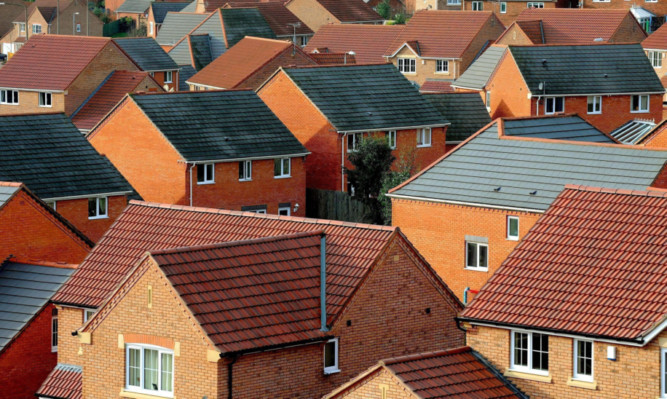The typical price of a house in Scotland has hit a new record high as the market emerges from “under the clouds” of the recession, according to a report.
Average prices soared to £166,771 in January, more than £1,200 higher than the previous peak reached in May 2008 during the last housing boom.
The January total followed a 1% rise in average house prices since December, the biggest monthly boost seen in seven months.
But completed home sales in January were down 44% since the last month of 2014, double the usual seasonal downturn and a 14% fall on a year ago to the lowest level for 23 months.
The findings were released in the latest house price index from Your Move / Acadata.
Christine Campbell, regional managing director of Your Move, said: “As we entered the new year, we also moved into a new chapter of Scotland’s housing recovery.
“Thousands of home owners are finally able to turn their backs on the housing crash as Scottish house prices break cover from under the clouds of the recession.”
Those behind the report hailed the new average house price – which follows annual growth of 4.5% – as a milestone for the housing recovery.
A look at the figures on a more local level shows that on an annual basis prices have risen in 25 of Scotland’s 32 local authority areas, indicating a widespread improvement in market conditions across the country.
Dundee had the most energetic start to the year, with prices soaring 6.7% during January 2015, the largest month-on-month increase in Scotland.
Fife and West Lothian also hit new peak house prices following strong annual growth of 9.5% and 10.9% respectively.
North Ayrshire experienced the biggest rise in prices on the mainland over the last year, up 11.6%.
But Ms Campbell warned there was still a long way for the recovery from the downturn.
“We may have turned a significant corner in the journey back from the financial crash but we’re nowhere near the finish line,” she said.
“Although a minority, average prices have fallen in seven local authorities of Scotland during the past year.
“West Dunbartonshire has seen the steepest drop in values in the last 12 months, with prices falling 7.2% on average, and flats in the area are now worth £20,000 less than a year ago.”
She said the drop in completed sales across Scotland should not be seen as a bad omen, with the start of the year always being the slowest time for house purchases.
“The Scottish housing market has all the necessary strings in its bow – the economy is moving in the right direction and employment is on the up while mortgage rates are at rock bottom,” she said.
“Next month’s land and buildings transaction tax will offer some extra relief to those clambering onto the bottom rungs of the ladder, lowering the stamp duty paid on purchases even further, and the greater policy clarity that will emerge after the general election will unleash a new wave of confidence that will outweigh any hesitancy in the market at the moment.”
